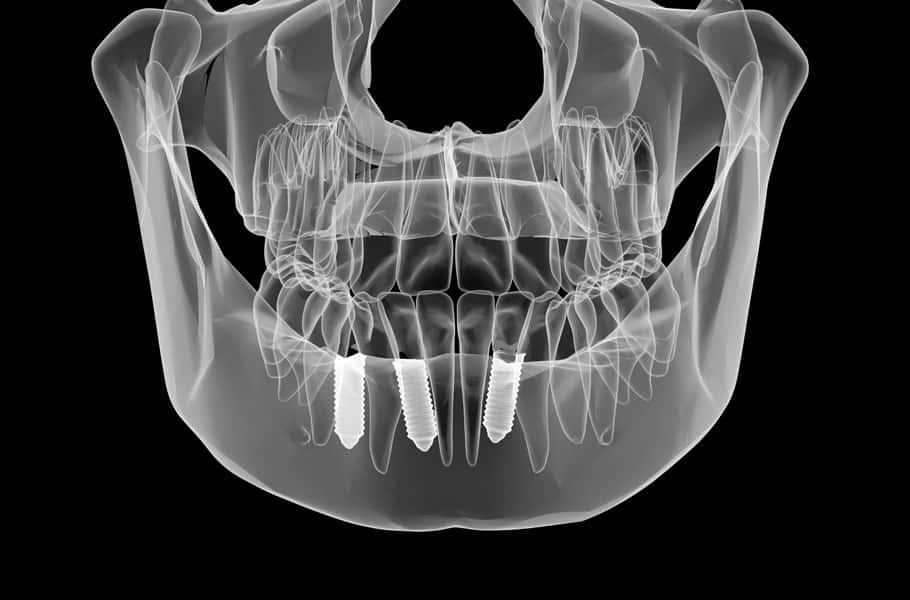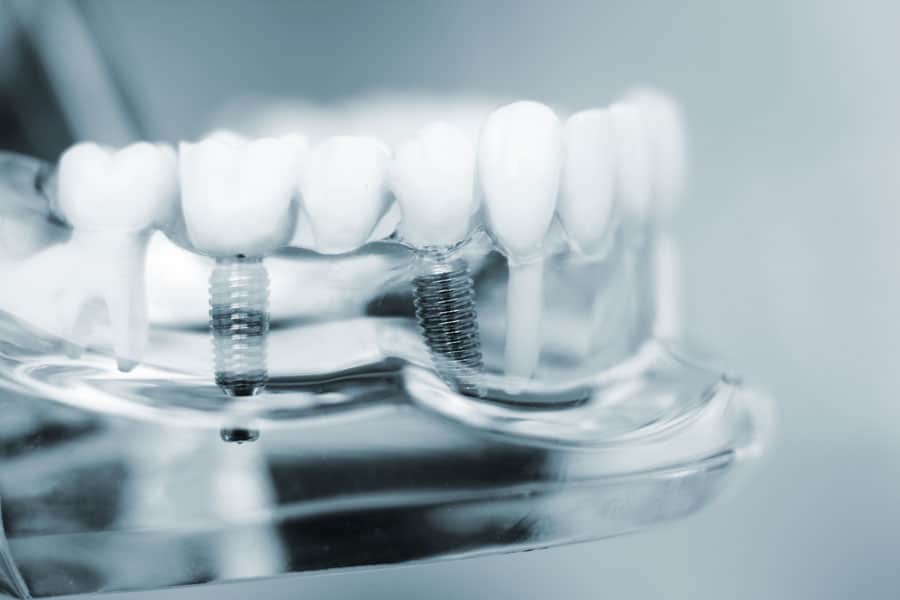Bone Grafting
Not long into the advent of the emerging era of dental implants, (1980s,1990s), it became apparent that the success of a dental implant depended on our ability to control the architecture of the bony site in which the implant was placed. Natural healing of tooth extraction sockets demonstrate three factors that work against the desired environment for good implant placement. (1.) There is substantial shrinking away, in a very irregular fashion, of the edges and walls of the bony socket in which a tooth is housed, resulting in a surface with ups and downs like a topographic map. (2) The consistency of the density of natural bone is erratic and unpredictable. (3.) The time required to obtain natures’s best result was inconsistent and unpredictable which made the flow of treatment difficult to formulate.
When these issues were noted, dental researchers immediately picked up on bone grafting techniques long present in the Orthopedic world where growing new bone against existing bone was an established technique. Most extraction sites can be improved upon or require bone grafts preceding implant placement. Occasionally implants can be placed immediately upon extraction of the tooth to be replaced. We will often mix the Platelet Rich Plasma (PRP) or PRF (Platelet rich fibrin) in with the bone graft material at the time of placement to encourage faster and more comfortable healing.
What is the bone graft material? Several types of products are in use. They range from pure human organ donor bone to mixtures of other animal bone products. There are also purely chemically derived products not having been part of a living entity used alone or in mixture with a human or animal product. Research in this area changes the field of choices rapidly.
How does a bone graft work? The bone graft material is placed next to your living bone and is resorbed, or digested away, by your own bone cells that are normally responsible for removing dead or dying bone that arise in the course of normal bone turn-over throughout life. This stimulates other bone cells that are responsible for making new bone on a normal basis but here it replaces the bone graft. Bone grafting basically fools your body to think it has a job to do against naturally dying bone, but instead, the dentally placed bone graft is the target.
What is Bone Grafting?
Over a period of time, the jawbone associated with missing teeth atrophies is reabsorbed. This often leaves a condition in which there is poor quality and quantity of bone suitable for placement of dental implants. In these situations, most patients are not candidates for placement of dental implants.
With bone grafting, we now have the opportunity to not only replace bone where it is missing, but also the ability to promote new bone growth in that location! This not only gives us the opportunity to place implants of proper length and width, it also gives us a chance to restore functionality and esthetic appearance.

Types of Bone Grafts
Autogenous Bone Grafts:
Autogenous bone grafts, also known as autografts, are made from your own bone, taken from somewhere else in the body. The bone is typically harvested from the chin, jaw, lower leg bone, hip, or the skull. Autogenous bone grafts are advantageous in that the graft material is live bone, meaning it contains living cellular elements that enhance bone growth.
However, one downside to the autograft is that it requires a second procedure to harvest bone from elsewhere in the body. Depending on your condition, a second procedure may not be in your best interest.
Allogenic Bone:
Allogenic bone, or allograft, is dead bone harvested from a cadaver, then processed using a freeze-dry method to extract the water via a vacuum. Unlike autogenous bone, allogenic bone cannot produce new bone on it’s own. Rather, it serves as a framework or scaffold over which bone from the surrounding bony walls can grow to fill the defect or void.
Xenogenic Bone:
Xenogenic bone is derived from non-living bone of another species, usually a cow. The bone is processed at very high temperatures to avoid the potential for immune rejection and contamination. Like allogenic grafts, xenogenic grafts serve as a framework for bone from the surrounding area to grow and fill the void.
Both allogenic and xenogenic bone grafting are advantageous in that they do not require a second procedure to harvest your own bone, as with autografts. However, because these options lack autograft’s bone-forming properties, bone regeneration may take longer than with autografts, with a less predictable outcome.
Bone Graft Substitutes
As a substitute to using real bone, many synthetic materials are available as a safe and proven alternative, including:
Demineralized Bone Matrix (DBM)/Demineralized Freeze-Dried Bone Allograft (DFDBA):
This product is processed allograft bone, containing collagen, proteins, and growth factors that are extracted from the allograft bone. It is available in the form of powder, putty, chips, or as a gel that can be injected through a syringe.
Graft Composites:
Graft composites consist of other bone graft materials and growth factors to achieve the benefits of a variety of substances. Some combinations may include: collagen/ceramic composite, which closely resembles the composition of natural bone, DBM combined with bone marrow cells, which aid in the growth of new bone, or a collagen/ceramic/autograft composite.
Bone Morphogenetic Proteins:
Bone morphogenetic proteins (BMPs) are proteins naturally produced in the body that promote and regulate bone formation and healing.
Synthetic materials also have the advantage of not requiring a second procedure to harvest bone, reducing risk and pain. Each bone grafting option has its own risks and benefits. Dr. Phillips will determine which type of bone graft material is right for you.
If you want to replace your missing teeth with dental implants, but don’t have enough healthy bone tissue in your jaw, a bone graft can make you a viable candidate. Dr. Phillips performs safe and effective bone grafts. You can schedule your bone graft consultation today by calling the office at (202)463-2090 or book an appointment online to get started.

